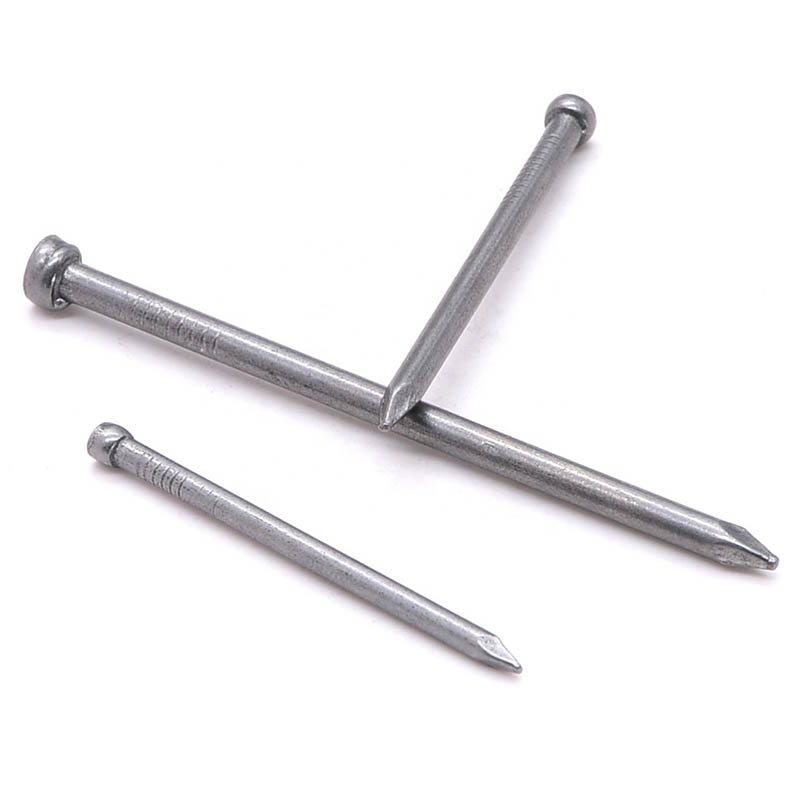Sep. 12, 2023
Minerals & Metallurgy
Nails, the humble yet indispensable fasteners that have held our world together for centuries, come in a variety of shapes and sizes. From the common nail used in carpentry to the more specialized types used in various trades, each has its unique purpose. Among these, the "lost head nail" stands as a curious and lesser-known member of the nail family. In this article, we'll delve into the origins, uses, and significance of the lost head nail.
The Lost Head Nail: An Intriguing Name
First and foremost, the name itself raises questions. What is a "lost head" nail, and why is it called so? The answer lies in the unique design of this nail. Unlike the typical nail with a visible head that protrudes from the surface, the lost head nail boasts a head that is concealed beneath the surface of the material it fastens. This inconspicuous feature is what gives the nail its name – it's as if the head has mysteriously disappeared, or "lost."
Origins of the Lost Head Nail
The lost head nail has a rich history dating back centuries. Its origins can be traced to traditional carpentry and joinery techniques. Craftsmen of old sought to create seamless and aesthetically pleasing finishes, and the lost head nail played a pivotal role in achieving this goal. By sinking the nail head beneath the surface, they could hide the fastener's appearance, leaving a smooth, unblemished surface.

In centuries past, lost head nails were crafted by skilled blacksmiths who meticulously shaped and forged them from iron. These nails were prized for their ability to maintain the structural integrity of buildings and furnishings while maintaining a polished, unobtrusive appearance. The craftsmanship involved in producing lost head nails was a testament to the dedication of artisans of the time.
Modern Uses of Lost Head Nails
While modern construction has introduced a wide range of fastening technologies, the lost head nail still finds its place in certain applications. These nails are commonly used in woodworking, cabinetry, and other fine carpentry projects. Their ability to provide a secure hold without compromising the visual appeal of the finished product is highly valued.
One of the key advantages of lost head nails is their ability to create a flush surface, making them ideal for applications where a smooth, flat finish is essential. This quality is particularly important in situations where the nail's presence should be inconspicuous, such as in furniture construction or decorative moldings.
The Lost Head Nail in Restoration and Preservation
In addition to their role in contemporary woodworking, lost head nails also play a crucial role in the restoration and preservation of historical buildings. When renovating structures with historical significance, maintaining the authenticity of the original design is of utmost importance. Lost head nails, with their timeless design, are a preferred choice in such projects. They allow craftsmen to recreate the look and feel of a bygone era while ensuring the structural stability of the building.
Conclusion: A Nail with Hidden Depths
In the world of fasteners, the lost head nail is a fascinating example of how craftsmanship and functionality can merge seamlessly. Its ability to remain hidden while providing strong and durable fastening makes it an invaluable tool in carpentry and restoration work. Whether you're a modern-day craftsman seeking to create a flawless finish or a restoration expert preserving the beauty of the past, the Qsource lost head nail continues to be a trusted ally, reminding us that sometimes, the most important things are the ones hidden from plain view.
Previous: What are the advantages of finned tube?
Next: The Art of Precision Machining: Exploring the Process of Graphite EDM
If you are interested in sending in a Guest Blogger Submission,welcome to write for us!
All Comments ( 0 )